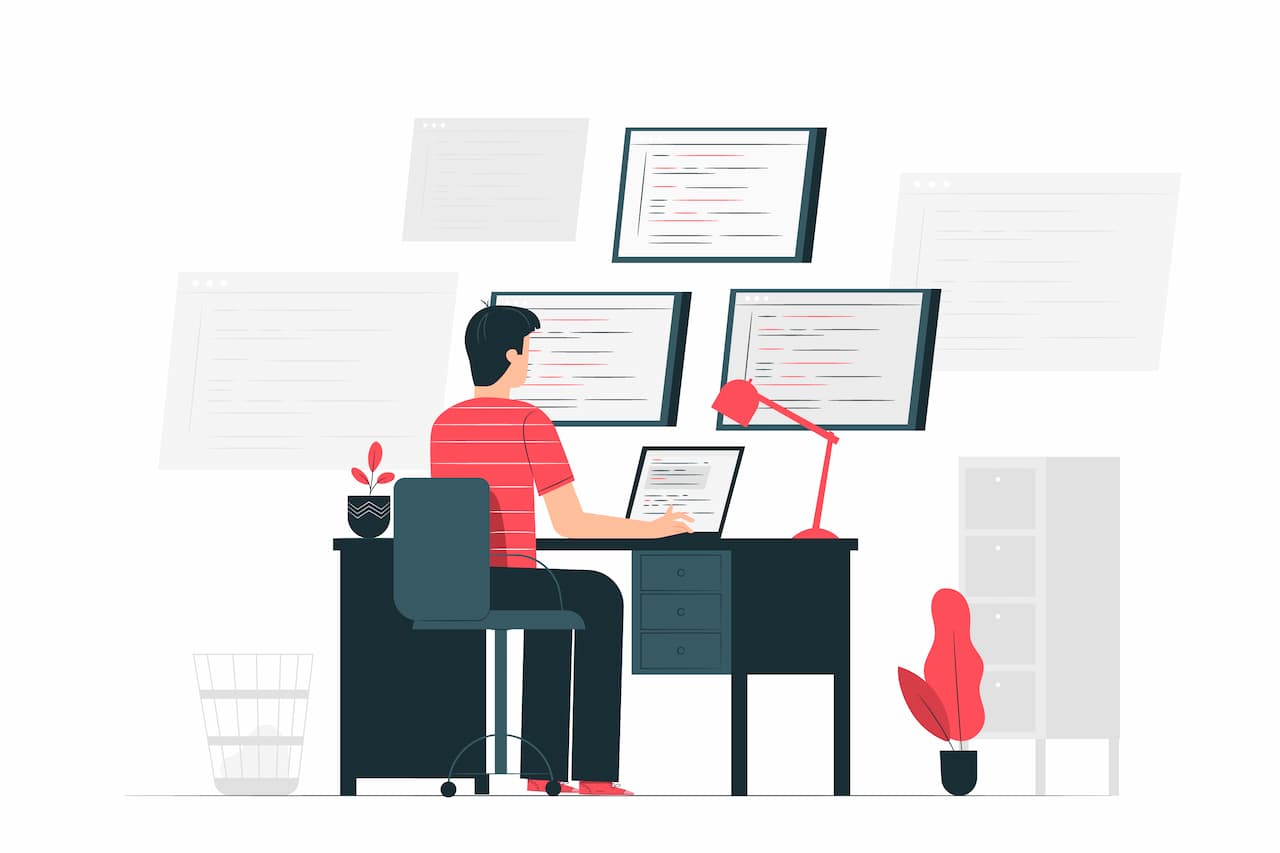
What Is CAT Tools in Translation? Types and Advantages
Computer-assisted translation or CAT tools help translators transfer text from one language to another more efficiently and quickly. When it comes to translation, the process can be complex and challenging. Not to mention that translation goes beyond changing words to different languages but also about transferring the cultural meaning.
CAT tools in translation play a significant role in boosting efficiency and productivity. Integrating CAT tools as part of growing business in the global market is crucial. It can speed up the translation process by automating repetitive or manual tasks. In this article, we will explore what CAT tools are, the different types available, and the advantages they offer to translators and businesses in the ever-expanding global market.
What is A CAT Tool in Translation?

CAT tools are translation software designed to aid human translators.
These tools aren't intended to replace human translators but rather serve as aids to enhance their productivity and accuracy. They can work best to translate various types of documents from literature and journalism to legal and medical translations. Further, CAT tools are also helpful for linguists to manage complex projects and maintain consistency throughout the translation process.
CAT tools work by storing previously translated text segments, also known as "translation memory." When a new document is being translated, the system compares the text with its existing database. If it finds a match, it suggests the previously translated segment, thus saving time and ensuring consistency. Additionally, CAT tools often provide features like terminology management, quality assurance, and collaboration tools, making them indispensable in the translation industry.
Machine Translation vs. Computer-Assisted Translation
Machine Translation (MT) is a fully automated process where computer algorithms and artificial intelligence translate text from one language to another without human involvement. On the other hand, Computer-Assisted Translation (CAT) involves human translators working alongside software tools designed to assist in the translation process.
In other words, CAT tools in translation empower human translators to take the lead, whereas MT tools automatically convert text from one language to another. However, it's important to note that MT is less accurate and often lacks context. It excels in speed, providing quick and cost-effective translations but often fails to provide the cultural sensitivity that human translators provide.
Meanwhile, CAT tools help translators rather than automatically translate a text to another language. They help translators improve efficiency, such as checking spelling, grammar, and style, and even storing certain terminologies.
In many cases, freelance translators and businesses use MT as a starting point to boost productivity for post-editing by human translators. However, combining the speed of MT and the accuracy of CAT tools can be a combo. It helps translators deliver high-quality translations more efficiently.
There are various types of CAT tools available, each catering to the specific needs and preferences of translators. Here are some of the most commonly used types:
1. Translation Memory Tools (TMs)
Translation Memory (TM) tools are the cornerstone of Computer-Assisted Translation. These tools create and manage a database of previously translated segments, often referred to as the translation memory.
When a new document is being translated, the CAT tool compares the source text to the segments in its memory. Translation Memory tools offer various benefits. First and foremost, they significantly enhance translation efficiency by automating the translation of repetitive or recurring phrases and sentences.
That means that translators don't need to re-translate the same content multiple times, allowing them to focus on the unique aspects of the text.
2. Terminology Management Tools
Terminology management tools are closely related to Translation Memory tools, but their primary focus is on ensuring consistent and accurate use of specialized terminology in translations. These tools help maintain glossaries and terminology databases which are critical for precise and specialized content.
For businesses in technical, scientific, or medical fields, correct terminology usage is non-negotiable. In these fields, even a minor error in terminology can lead to misinterpretation or, in the case of medical documents, life-threatening consequences.
The tools provide a structured approach to terminology, allowing translators to access and apply the approved terms consistently. This not only reduces the likelihood of translation errors but also ensures that the final translations are in compliance with industry standards and regulations.
3. Machine Translation Tools
Google Translate and DeepL are examples of machine translation tools (MT tools). They can translate text from one language to another without human intervention thanks to the advances in artificial intelligence and neural machine translation.
While MT tools have made remarkable progress, they are not without limitations. The translations they produce can be accurate but lack the nuance and context awareness that human translators bring to the process.
Therefore, MT is most valuable when used as a draft or as a means of quickly understanding the content of a document. Translators can then review and refine the MT output, ensuring that it aligns with the context, intent, and target audience.
For businesses looking to reduce costs and speed up the translation process, integrating MT into CAT tools can be a strategic move. However, the critical role of human translators in refining and adapting MT-generated content should not be overlooked.
Read also: Machine Translation and Neural Networks in Game Localization
4. Alignment Tools
Alignment tools serve an essential role in creating translation memory databases from previously translated documents that were not initially created using CAT tools. These tools align the source and target texts, identifying corresponding segments and building a translation memory database from these aligned segments.
Alignment tools are particularly valuable for businesses or translators who have accumulated a substantial amount of translated content over the years but have not used CAT tools. By aligning these legacy translations, they can create a robust translation memory database, which, in turn, enhances consistency and productivity in future translation projects.
5. Quality Assurance Tools
Quality Assurance (QA) tools are designed to scan translated documents for errors, inconsistencies, and adherence to specific style guides or linguistic rules. They play a crucial role in ensuring that translations meet the desired quality standards.
These tools can identify and flag various issues, such as spelling and grammar errors, punctuation inconsistencies, and formatting problems. Moreover, these tools also check for adherence to industry-specific terminology, which is vital in fields like legal and medical translation. Conducting these automated checks early in the translation process using QA tools can help translators and editors rectify errors swiftly.
6. Collaboration Tools

Collaboration tools within CAT software enable real-time teamwork among translators, editors, and project managers. They foster efficient communication, project tracking, and simultaneous work on the same document, regardless of the physical location of the team members.
Real-time collaboration features allow multiple translators to work on different sections of a document simultaneously. This accelerates the translation process and ensures that large-scale projects are completed more quickly.
How do CAT Tools Work?
CAT tools work by breaking down a text into manageable segments, which can be sentences, paragraphs, or smaller units, depending on the language and document type.
It will also store the source and translated segments in a database. The process of using CAT tools for translation usually involves these steps:
- Translators input texts into the CAT software and it will extract the document for translation.
- CAT software will break the documents into smaller segments.
- The software displays the source text and translated text side by side.
- The translator will type the translation into the empty target segments until all segments are translated.
- Once it is done, the software will save both the source and translation text as a pair in the database.
- The translation memory in CAT tools will always update its data whenever a change is made.
Read also: Basic Tools Beginner Translator Should Know
Common Features of CAT Tools
CAT tools share several key features that are fundamental to their functionality:
Translation Memory
It stores previously translated segments, which the CAT tool can suggest when encountering similar content, improving efficiency and maintaining consistency.
Term Base
A term base stores specific terminology and their translations, ensuring linguistic precision, especially in technical and specialized fields.
Style Guide
Style guides provide guidelines for grammar, punctuation, style, and formatting preferences, ensuring a consistent and uniform voice in translations.
Quality Assurance Features
Quality assurance conducts automated checks on translations for spelling, grammar, punctuation, terminology consistency, and adherence to style guides, ensuring high-quality, error-free translations.
Advantages of Using CAT Tools

Now that we have a good understanding of what CAT tools are, how they work, and the various types available, let's explore the numerous advantages they offer to translators and businesses alike.
Consistency
Maintaining linguistic and terminological consistency is paramount in translation, especially for businesses that rely on maintaining a specific brand image or adhering to industry standards. CAT tools play a pivotal role in achieving this consistency.
They ensure that the same terms and phrases are used consistently throughout the translated material, reducing the likelihood of errors, misinterpretations, or ambiguities.
Terminology Management
CAT tools excel at managing specialized terminology, which is essential for translating documents in technical, legal, medical, or other specialized fields. The tools can help manage glossaries and terminology databases, ensuring that the correct industry-specific terms are consistently applied.
Cost-Effective
While there may be an initial investment in terms of software licenses and training, the long-term cost-effectiveness of CAT tools is undeniable. For freelance translators, CAT tools can substantially increase their productivity, allowing them to handle a larger volume of work in less time. This increased output directly translates to higher earnings and a more competitive edge in the market.
These tools also offer the flexibility to negotiate pricing with translators based on the matches found in the translation memory. Over time, as the translation memory grows, the cost per word decreases, making CAT tools a cost-effective choice for organizations with ongoing translation needs.
Quality Control
CAT tools have integrated quality control mechanisms to perform automated checks on translated documents, scanning for errors, inconsistencies, and adherence to specific style guides or linguistic rules.
Quality control includes spell-checking, grammar and punctuation verification, formatting and layout consistency, and even adherence to industry-specific standards. These features save time for translators and editors by automating the initial quality control steps, allowing them to focus on more intricate linguistic and contextual aspects of the translation.
Read also: Translators and Interpreters, They're Different!
Limitations and Challenges
While the advantages of CAT tools are substantial, it's crucial to acknowledge the challenges and limitations associated with their use: Initial Learning Curve CAT tools can be complex, and there is a learning curve involved in mastering their use. Translators, particularly those new to CAT tools, may require time to become proficient in using the software effectively. Training and practice are essential to overcome this initial challenge.
Non-Repetitive Content
Using CAT tools is most effective when there is a significant amount of repetitive content. For highly creative or unique texts, their utility may be limited. Translators may need to invest more time in adapting the translations to the unique context and tone of such content.
Overreliance on Translation Memory
Overreliance on translation memory can be a limitation if not used with care. In some cases, it may suggest incorrect translations based on similarities with past work. Translators must exercise judgment and ensure that the suggested translation aligns with the context and intent of the current text.
Final Thought
Computer-assisted translation (CAT) tools have revolutionized the way translation work is done. They empower human translators with powerful aids, making their work more efficient, consistent, and cost-effective.
In a world that continues to expand through globalization and digital connectivity, CAT tools are a valuable asset that empowers language professionals. It also ensures that language barriers do not hinder communication, business, or understanding across borders and cultures. As technology advances, it's likely that CAT tools will continue to evolve, further enhancing their capabilities and impact on the translation industry.
Read also: Why Does the Entertainment Industry Need Translation?